
17th Century French Fan
"A Fan is an instrument used by ladies to agitate the air, and cool the face, in warm weather; hence,…

18th Century Spanish Shell Fan
"A Fan is an instrument used by ladies to agitate the air, and cool the face, in warm weather; hence,…

Goshawk
"Goshawk, or Goshauk (properly goose-hawk) is a bird of prey. It is brown above, white underneath, barred…

Hedgehog
"Hedgehog is a quadruped distinguished by having the body covered with spines instead of hair. The skin…
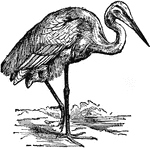
Heron
"Heron is the common name of birds of the genus Ardea. The herons are distinguished by having a long…

Toucan
"The Toucan, in ornithology, is the popular name of any bird of the genus Rhamphastos. They are all…

Viscacha
"Viscacha is a stout-built rodent, resembling a marmot, from 18 inches to two feet long, exclusive of…

Walrus
"The walrus, also called the morse, seahorse, and sea cow, is now confined to the regions within the…
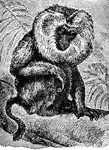
Wanderoo
"The Wanderoo, or Wanderu, is the Macacus silenus, from the S. of Hindustan, especially the country…

Wolf
"Wolf is the vernacular name of certain species of the genus Canis. The common wolf (C. lupus) has very…

Hairy Nosed Wombat
"The Wombat is a burrowing marsupial from Australia and Van Dieman's Land, and the islands of Bass'…

Green Woodpecker
"Woodpecker is the popular name of the old Linnæan genus Picus, now greatly divided. Woodpeckers…

Wren
"Wren is a genus of birds, having a slender, slightly curved, and pointed bill; the wings very short…

Yak
"Yak is a species of ox from the mountainous regions of Tibet. There are two races: the wild yak, generally…

Burchell's Zebra
"Zebra is a popular name for any of the striped forms of the genus Equus; thus embracing the quagga,…

Iguana
"Iguana is a genus of saurian reptiles, natives of Brazil, Cayenne, the Bahamas, and neighboring localities…

Jay
"Jay is the popular name of a species of birds belonging to the crow family, of a vinous red color;…

Kangaroo
"The Kangaroo is an animal of Australia, first observed by a party of sailors on the coast of New South…

Kinkajou
"Kinkajou is a genus of carnivorous mammals. They have prehensile tails, with which they hang on to…

Lizard
"Lizard is the popular name of numerous reptiles having usually two pairs of limbs and an elongated…
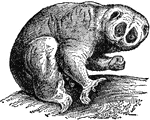
Loris
"Loris is a genus of Lemuridæ, with rounded heads and pointed snouts, slender bodies, very large…

Megatherium
"Megatherium is a genus of extinct edentates, founded on a nearly complete skeleton discovered on the…

Ostrich
"The Ostrich is the largest of all living birds, standing from six to eight feet in height, and has…

Penguin
"The Penguins are aquatic birds confined to the high S. latitudes or both hemispheres, where they congregate…

Pheasant
"The Pheasant is one of the most highly prized game birds. The adult male pheasant is a beautiful bird,…
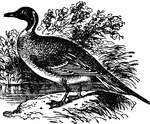
Pintail Duck
"The Pintail Duck has the upper parts and flanks ash, with narrow stripes of black; under parts white;…

Polecat
"The Polecat is one of the Mustelinæ, akin to the marten, but with a broader head, a blunter snout,…

Prehensile Tailed Porcupine
"The Porcupine is a rodent quadruped. The North American porcupine is about two feet long, and of sluggish…

Hystrix Crystata Porcupine
"The Porcupine is a rodent quadruped. The North American porcupine is about two feet long, and of sluggish…

Aratrum
"A plough. Among the Greek and Romans the three most essential parts of the plough were-the plough tail,…

Aratrum
"A plough. Among the Greek and Romans the three most essential parts of the plough were-the plough tail,…

Procyon Lotor Raccoon
"The Raccoon, or Racoon, is a handsome animal, about the size of a large cat, brown furry hair, tail…

Rattlesnake
"Rattlesnake is the English name for any species of the American genus Crotalus, the tail of which is…

Salamander
"Salamander is a genus of reptiles closely allied to the frog, from which it differs in having an elongated…

Sand Lizard
"The Sand Lizard is a common European lizard, about seven inches long, of which the tail is four. Usual…

Hooded Seal
"The Seal, of the family Phocidæ, or seal tribe, are, of all four-limbed mammiferous animals,…

Snipe
"Snipe is the name of a common family of birds. The common American snipe is about equal in size to…

Spider Monkey
"Spider Monkey is a general name applied to many species of platyrhine or New World monkeys, distinguished…

Surgeon Fish
"Surgeon-fish is a popular name for any species of the genus Acanthurus, from the sharp, erectile, lancet-shaped…

Surgeon Fish
"Surgeon-fish is a popular name for any species of the genus Acanthurus, from the sharp, erectile, lancet-shaped…

Tadpole
"The Tadpole is the larva of the anurous amphibia, sometimes so far extended as to include larvaæ…

Tadpole
"The Tadpole is the larva of the anurous amphibia, sometimes so far extended as to include larvaæ…
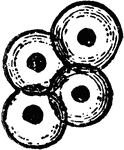
Frog Eggs
"The Tadpole is the larva of the anurous amphibia, sometimes so far extended as to include larvaæ…

Frog Egg
"The Tadpole is the larva of the anurous amphibia, sometimes so far extended as to include larvaæ…

Tail-piece
"A Tail-piece is a piece at the end, as of a series of engravings; an appendage. Also a piece of ebony…

Spine Tailed Chimney Swift
A well known black chimney swift of the United States. So called because the shafts of the tail feathers…

Wrentits
Having the plumage extremely lax and soft; rounded wings much shorter thn long, narrow, graduated tail;…

Red Squirrel
A small species of squirrel, about 7 inches long with a tail about the same length. The ears are tufted,…

Chinchilla
A small south American rodent quadruped of the genus Chinchilla, especially C. lanigera; a pika-squirrel.…

Chipmunk
A name of a hackee or chirping squirrel of the United States. usually a small striped species about…

Lark Finch
A North American bird having a long graduated, party colored tail, and the head much striped.

King Bird of Paradise
A bird 6 to 7 inches in length with its middle tail feathers about as long. The male is chiefly of a…

American Dipper
A bird that spends most of its time in the water. It has a thick body; very short tail of 12 rectrices…

Marsh Hawk
A bird of the harriers, having an incomplete facial disk and large ear pars, as in some owls, a week…

Yellow Billed Cuckoo
A bird with a moderately curved beak, wide at th base and compressed beyond it, long pointed wings,…

Palaeotherium magnum
"The Palaeotherium magnum was of the size of a horse, but thicker and more clumsy; its head…

Anoplotherium Commune
"The Anoplotherium commune was of the height of the wild boar, but its form was more elongated;…


